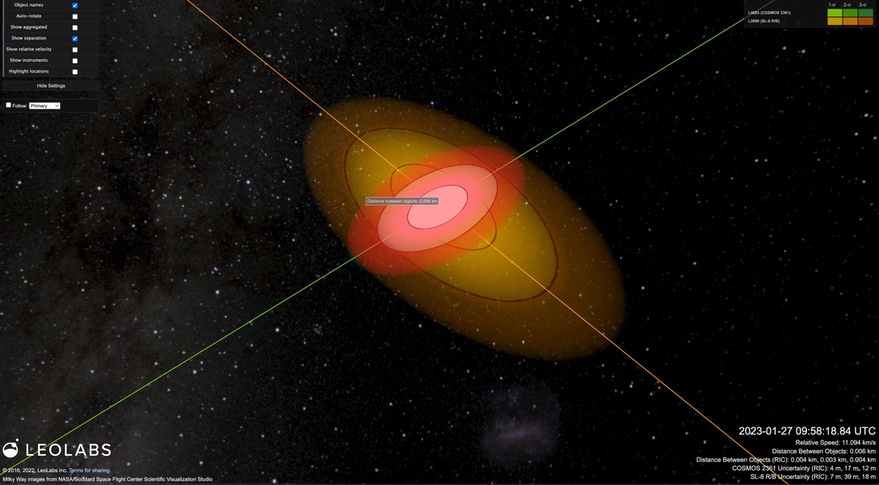WASHINGTON — The Commerce Department has outlined the services it proposes to offer free of charge to satellite operators from the space traffic management system it is developing.
In a request for information (RFI) published Jan. 26, the department’s Office of Space Commerce listed what services it anticipates offering through a “basic” space safety service and those more advanced services that will not be included.
The Office of Space Commerce plans to provide those services through a system called the Traffic Management System for Space (TraCSS), previously known as the open architecture data repository. The office is developing TraCSS to eventually take over providing civil space traffic management services, such as warnings of potential collisions, from the Defense Department as outlined in Space Policy Directive 3 in 2018.
The RFI lists 14 services that the office expects to offer through TraCSS as part of the free basic service to satellite operators. They include warnings of potential collisions, launch collision avoidance screenings and forecasting object reentries.
Many of those services are provided by the Defense Department now, although the RFI indicates that it will offer additional or improved services beyond what is currently available. One example is what the Office of Space Commerce calls “more advanced approaches” for calculating the probability of a collision based on the dynamics of each close approach.
The RFI lists nine additional services that it does not plan to include in the basic service. That includes combining data from multiple providers into a “single, higher-fidelity product” for calculating potential conjunctions, satellite breakup detecting and tracking, and providing optimized recommendations for satellite maneuvers to avoid conjunctions.
The Office of Space Commerce outlined its TraCSS plans to get feedback from both satellite operators and companies that provide commercial space traffic management services. The RFI will be open for comments through Feb. 27.
The office is seeking input on whether the proposed basic service meets or exceeds what the Defense Department offers now, and if it should include additional capabilities. It also asks if the proposed basic service would adversely affect companies providing commercial services.
While Space Policy Directive 3 directed the Commerce Department to provide a basic space traffic management service at no charge, it did not define what constituted basic. “That line is a little murky,” Richard DalBello, director of the Office of Space Commerce, said of the difference between basic and advanced services in a talk at the AMOS Conference in September. “We don’t want to compete with young companies. On the other hand, we do want to provide a forward-leaning, technologically superior product to what they’re receiving today.”
He noted in that speech that the feedback he had received from satellite operators is that they wanted his office to improve upon what the Defense Department provides. “The central message that we’re getting from the commercial sector is, ‘Richard, if all you’re going to do is give us what we’re already getting from the Defense Department, we think that’s not enough,’” he said.
The Office of Space Commerce is working to establish TraCSS as low Earth orbit becomes more congested. The latest incident took place Jan. 27 according to LeoLabs, a company that provides space situational awareness services through a network of radars tracking objects in LEO.
The company said that two defunct objects, the Cosmos 2361 spacecraft and an SL-8 rocket body, nearly collided at an altitude of 984 kilometers. LeoLabs estimated the distance of closest approach at just six meters, with an error margin of a few tens of meters.
“Had the SL-8 rocket body and Cosmos 2361 collided, it likely would’ve resulted in thousands of new debris fragments that would have persisted for decades,” the company stated.
Because both objects were defunct, there was no ability for them to avoid a collision even if given advance notice by a government or commercial space traffic management system. “It’s imperative that we not only focus on collision avoidance but also debris mitigation and debris remediation,” LeoLabs stated. “This requires investing in debris removal technologies and missions.”
